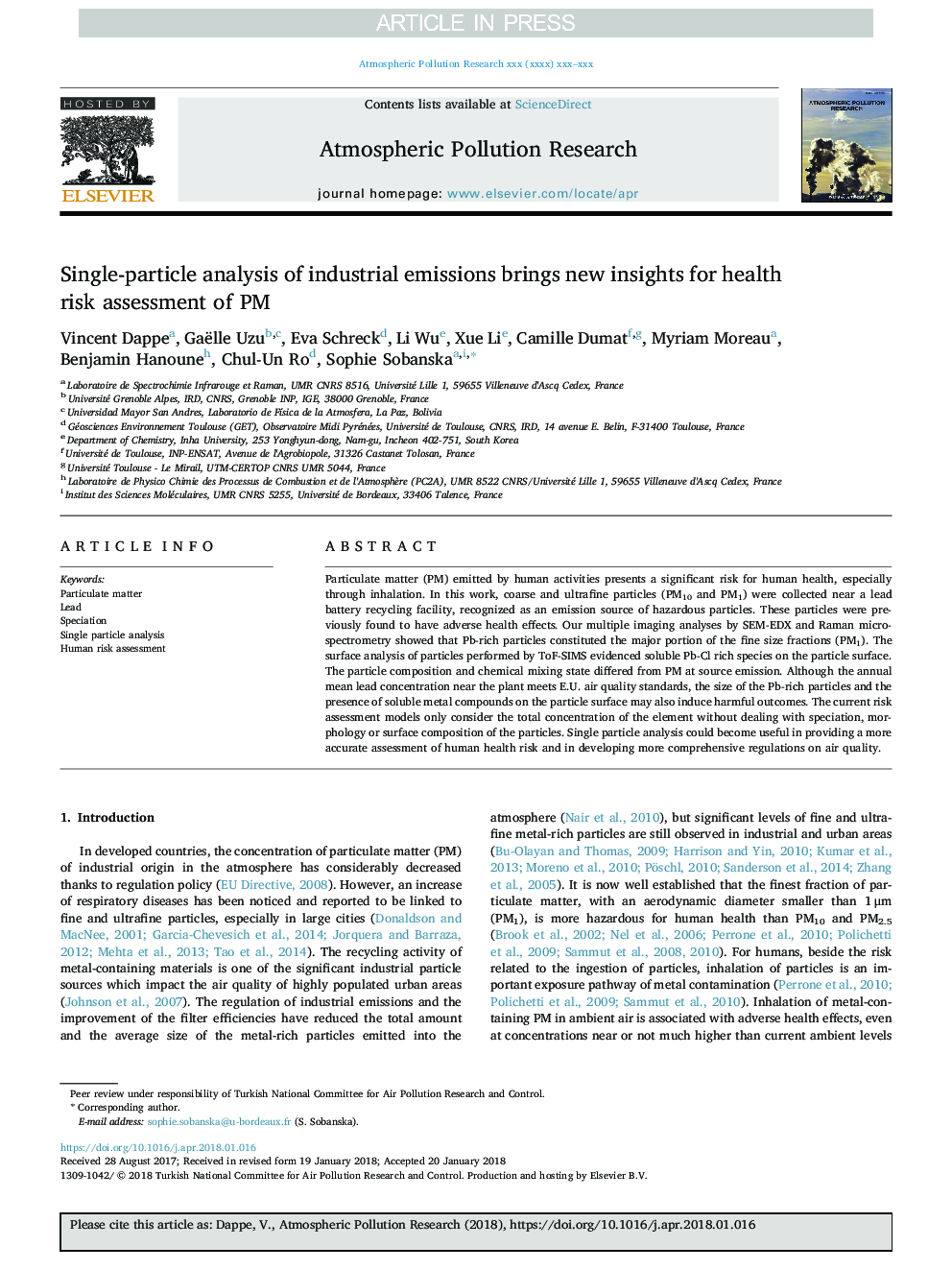| Article ID | Journal | Published Year | Pages | File Type |
|---|---|---|---|---|
| 8862615 | Atmospheric Pollution Research | 2018 | 8 Pages |
Abstract
Particulate matter (PM) emitted by human activities presents a significant risk for human health, especially through inhalation. In this work, coarse and ultrafine particles (PM10 and PM1) were collected near a lead battery recycling facility, recognized as an emission source of hazardous particles. These particles were previously found to have adverse health effects. Our multiple imaging analyses by SEM-EDX and Raman microspectrometry showed that Pb-rich particles constituted the major portion of the fine size fractions (PM1). The surface analysis of particles performed by ToF-SIMS evidenced soluble Pb-Cl rich species on the particle surface. The particle composition and chemical mixing state differed from PM at source emission. Although the annual mean lead concentration near the plant meets E.U. air quality standards, the size of the Pb-rich particles and the presence of soluble metal compounds on the particle surface may also induce harmful outcomes. The current risk assessment models only consider the total concentration of the element without dealing with speciation, morphology or surface composition of the particles. Single particle analysis could become useful in providing a more accurate assessment of human health risk and in developing more comprehensive regulations on air quality.
Related Topics
Physical Sciences and Engineering
Earth and Planetary Sciences
Atmospheric Science
Authors
Vincent Dappe, Gaëlle Uzu, Eva Schreck, Li Wu, Xue Li, Camille Dumat, Myriam Moreau, Benjamin Hanoune, Chul-Un Ro, Sophie Sobanska,
